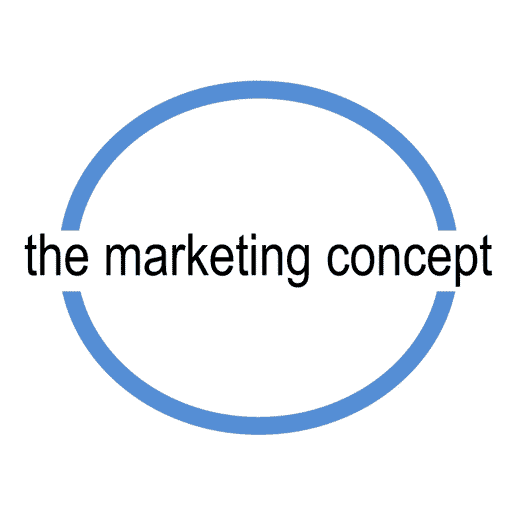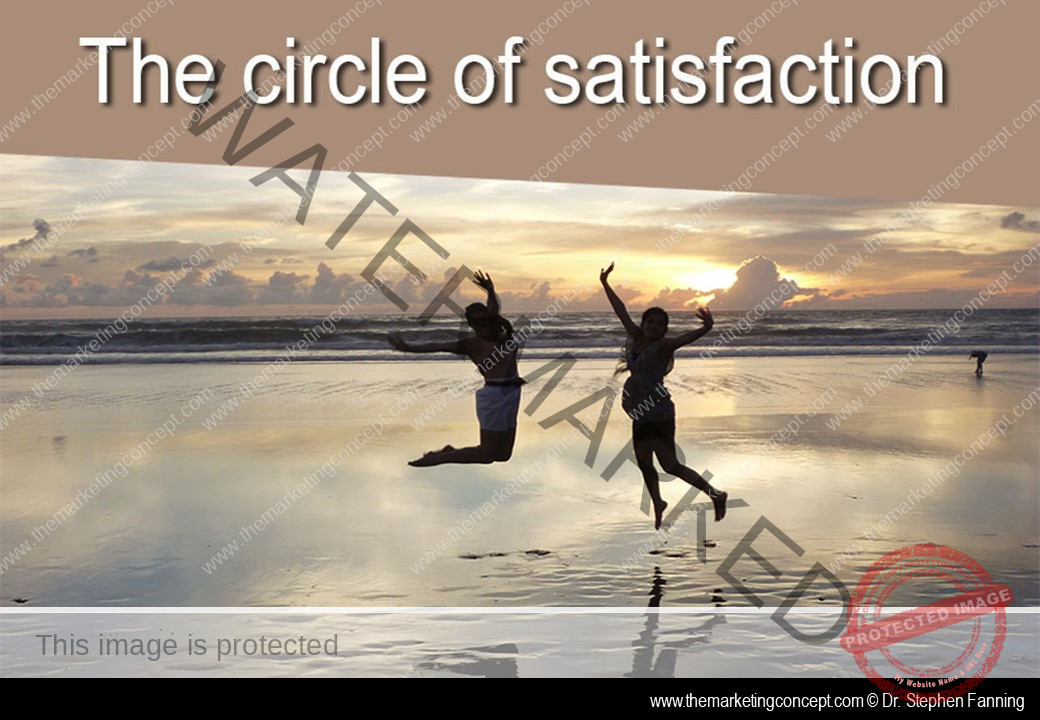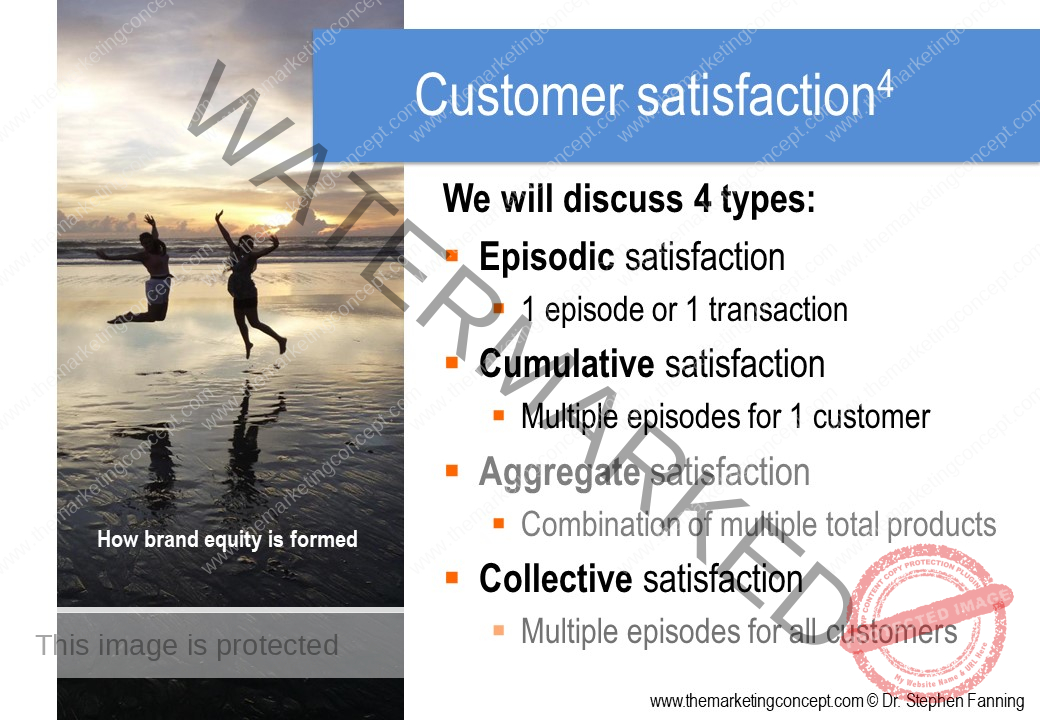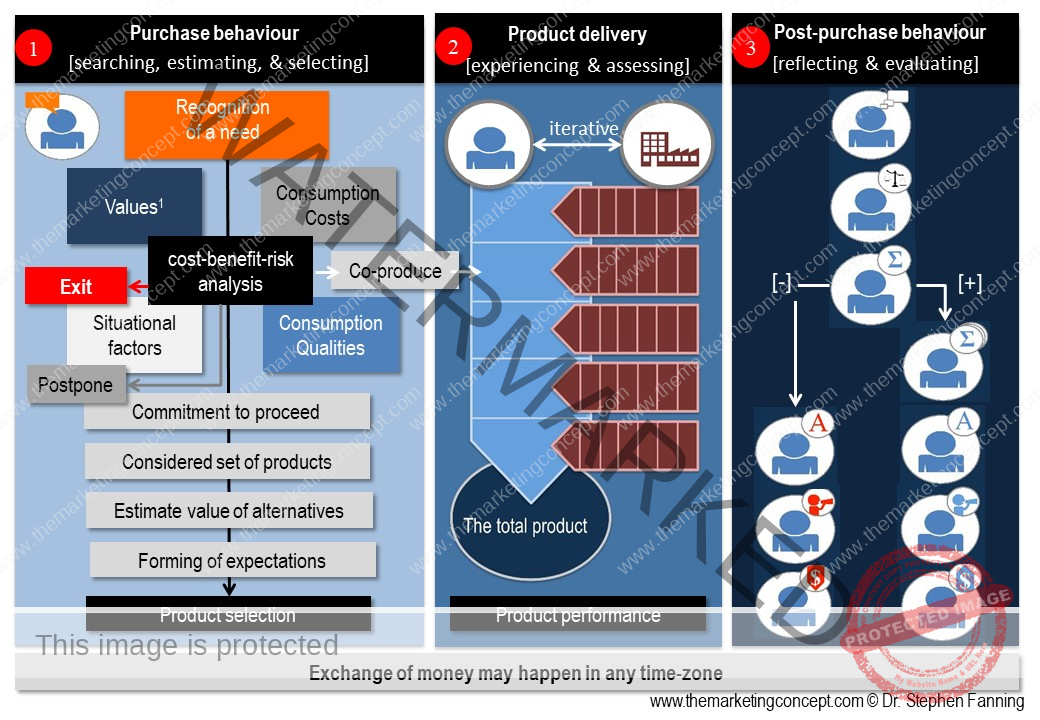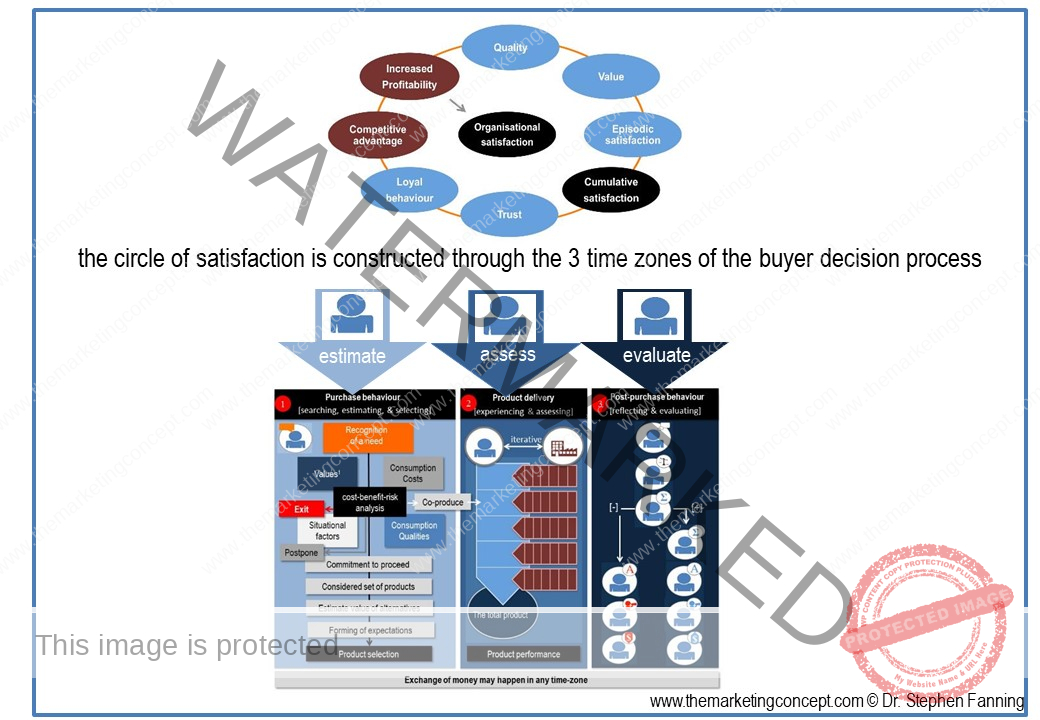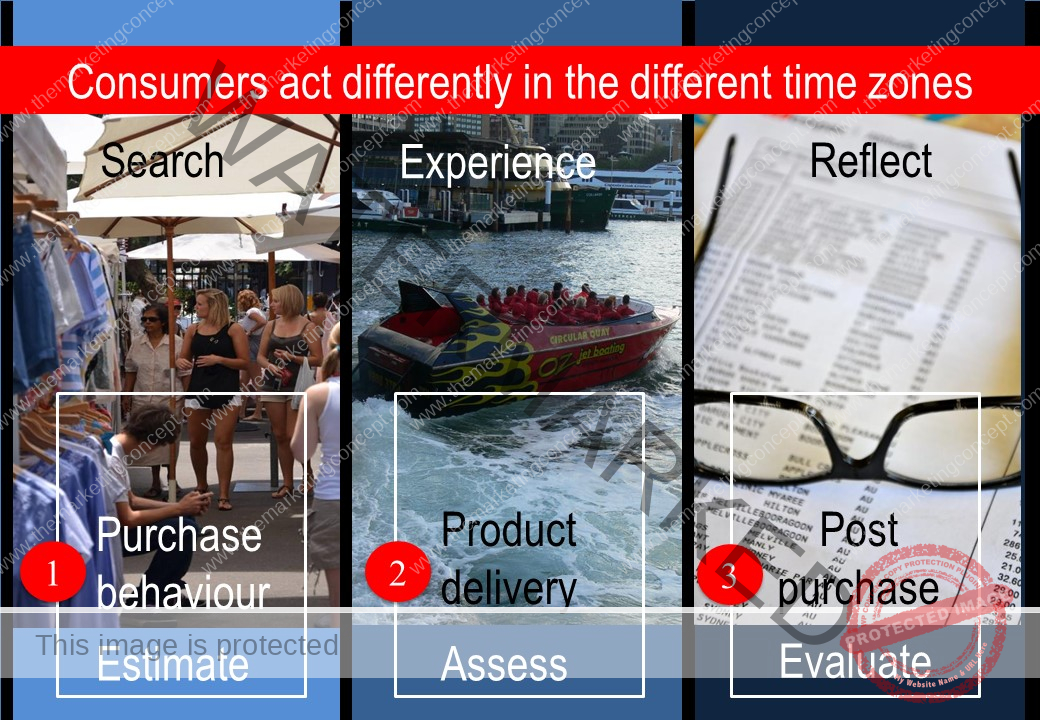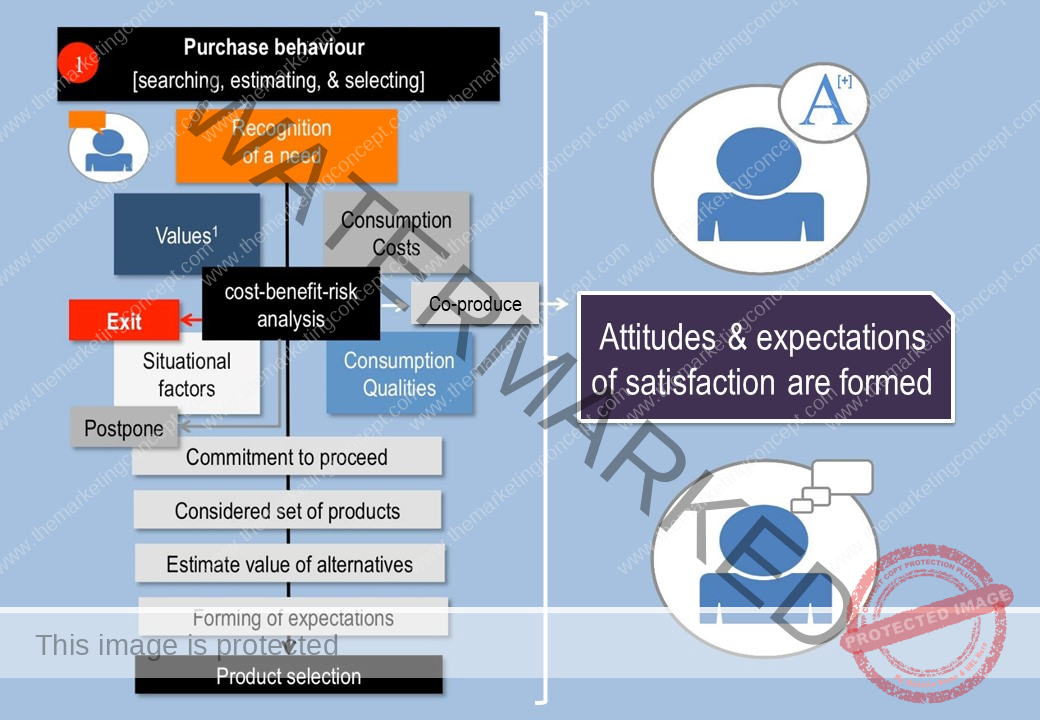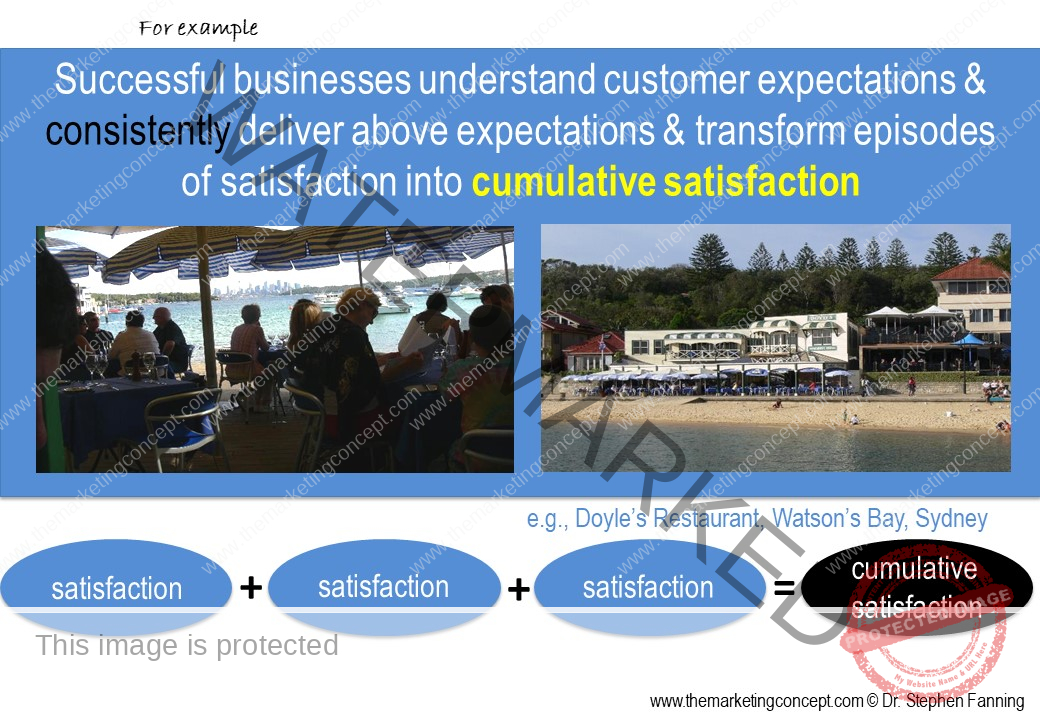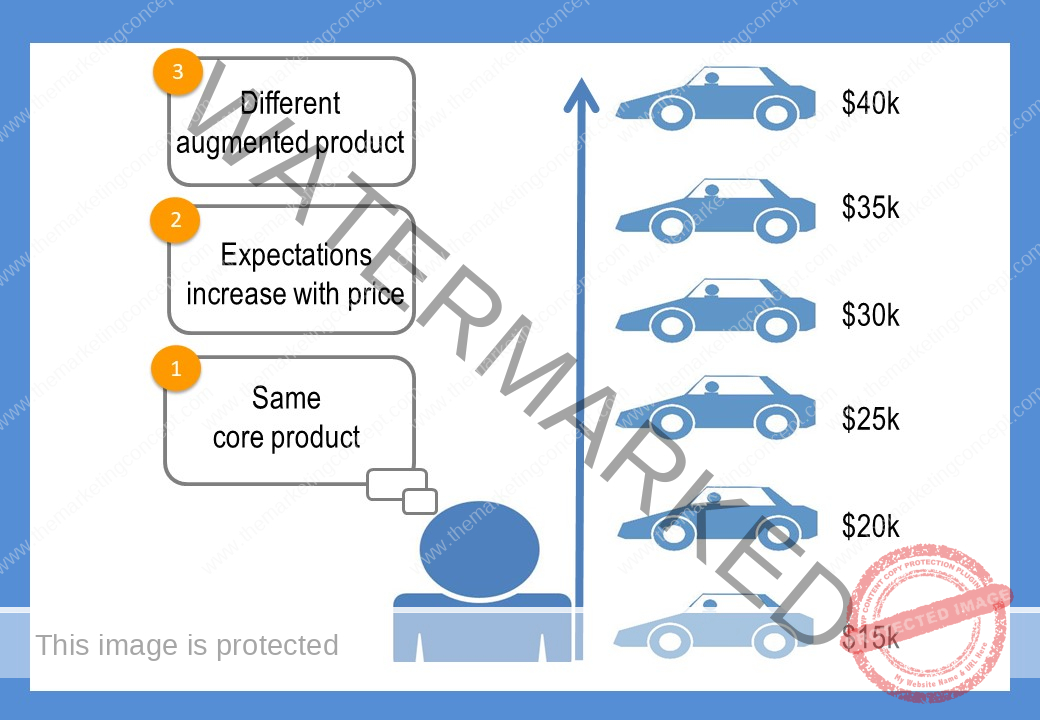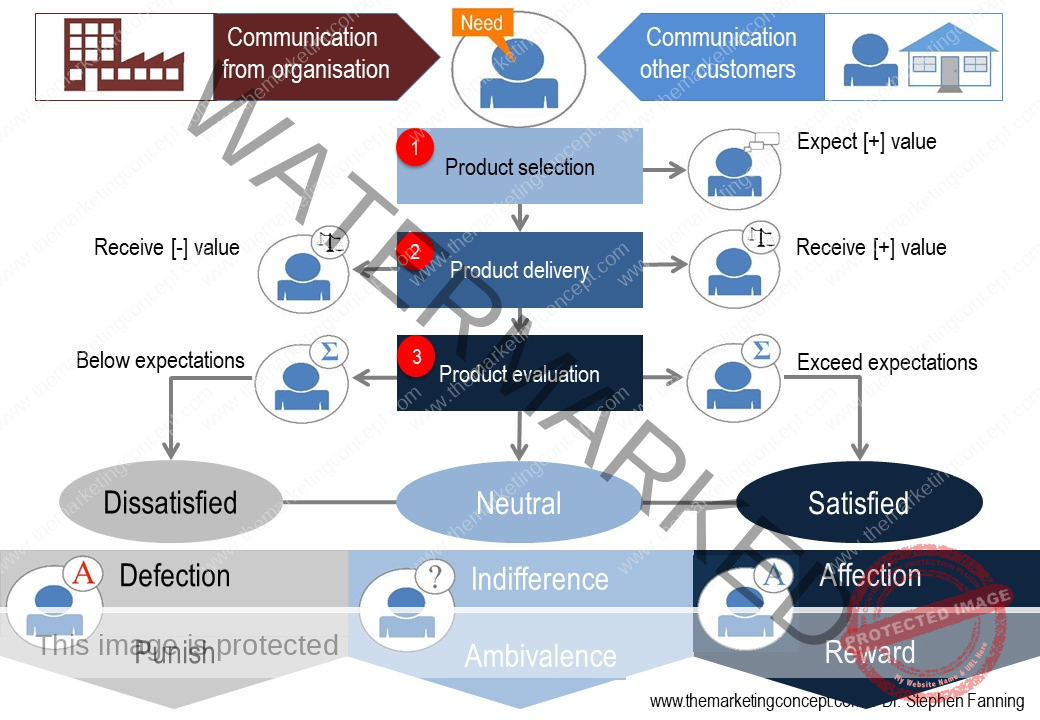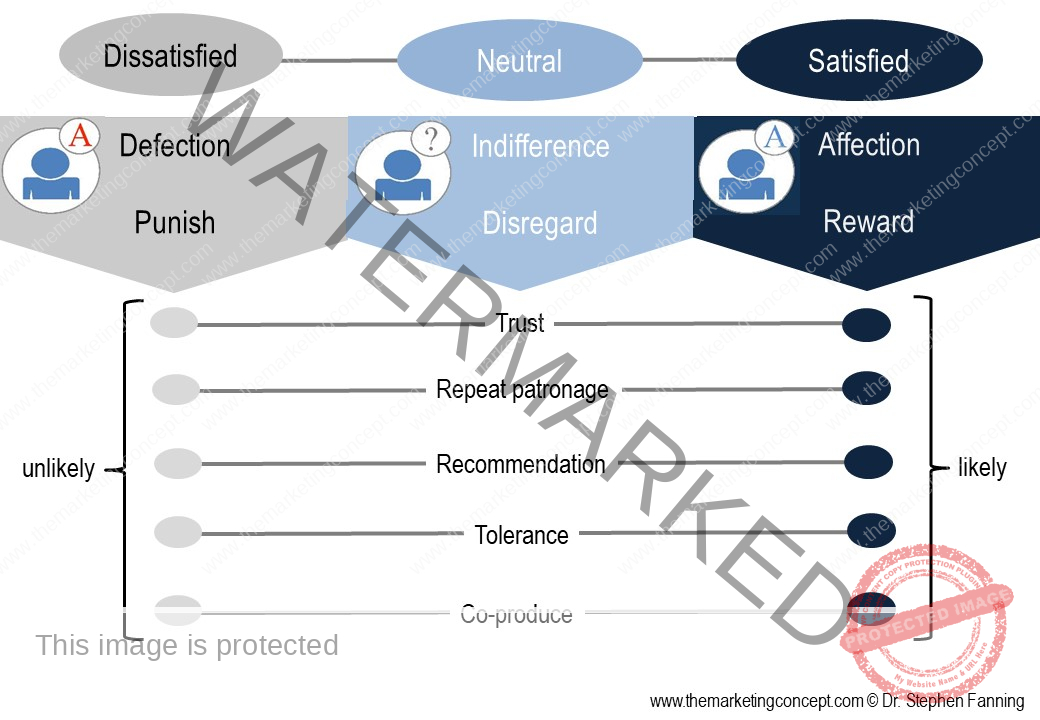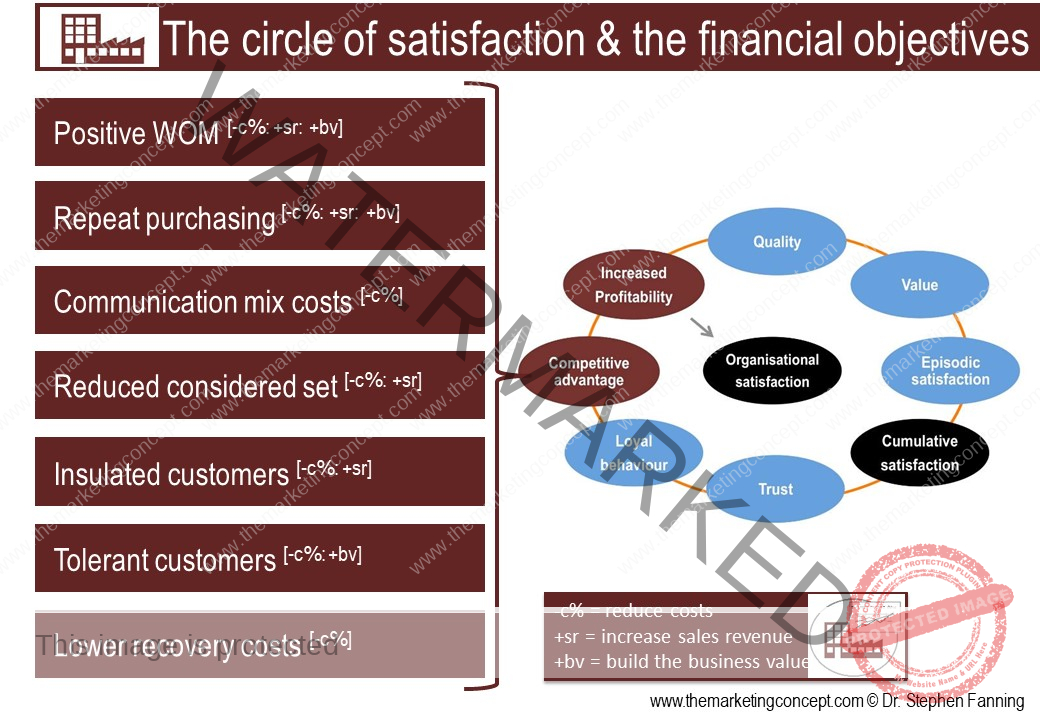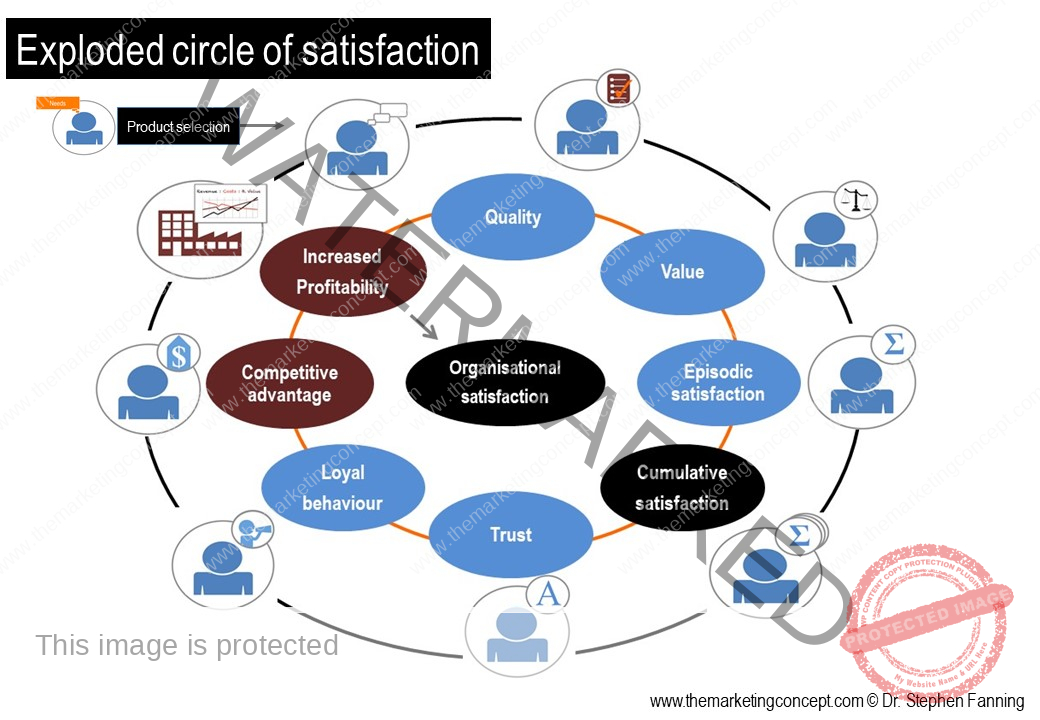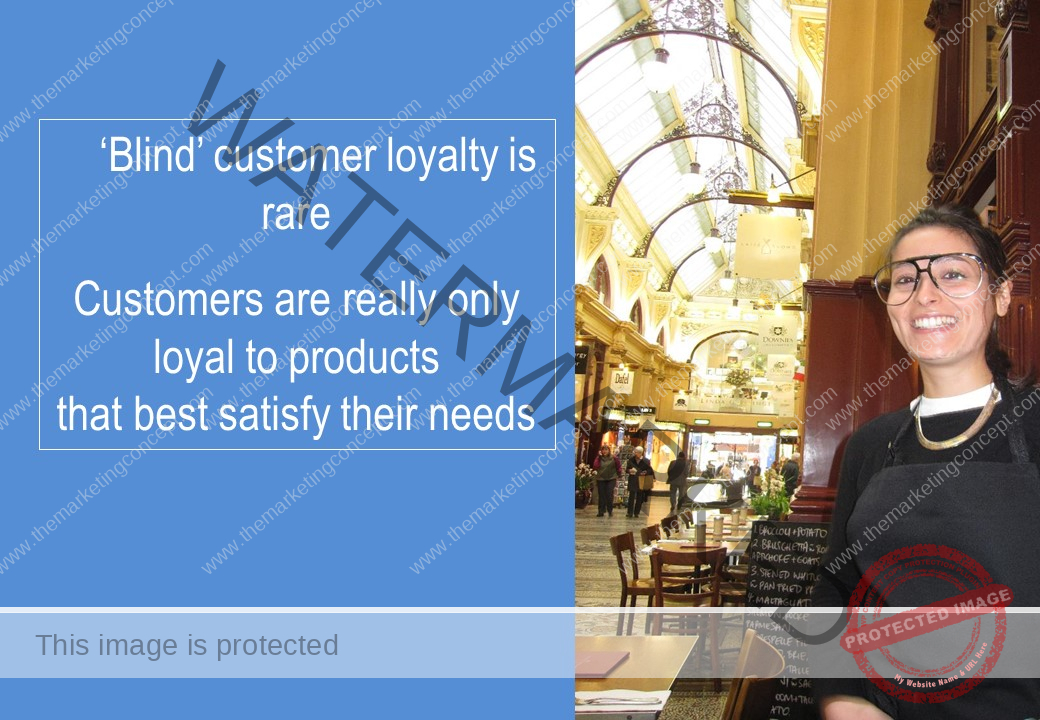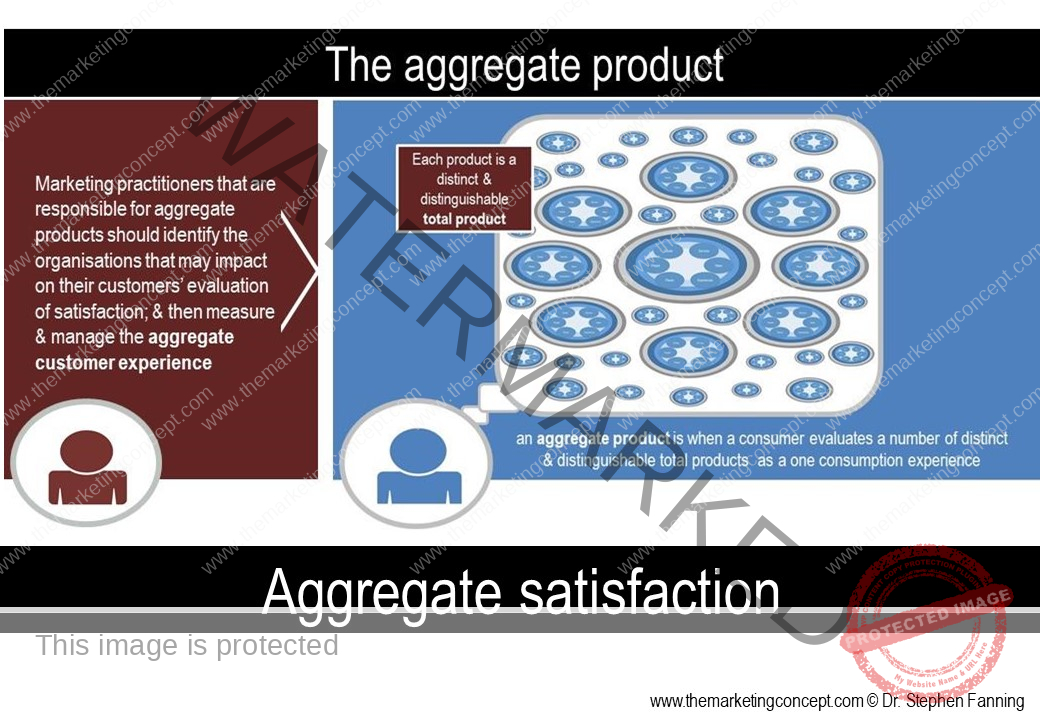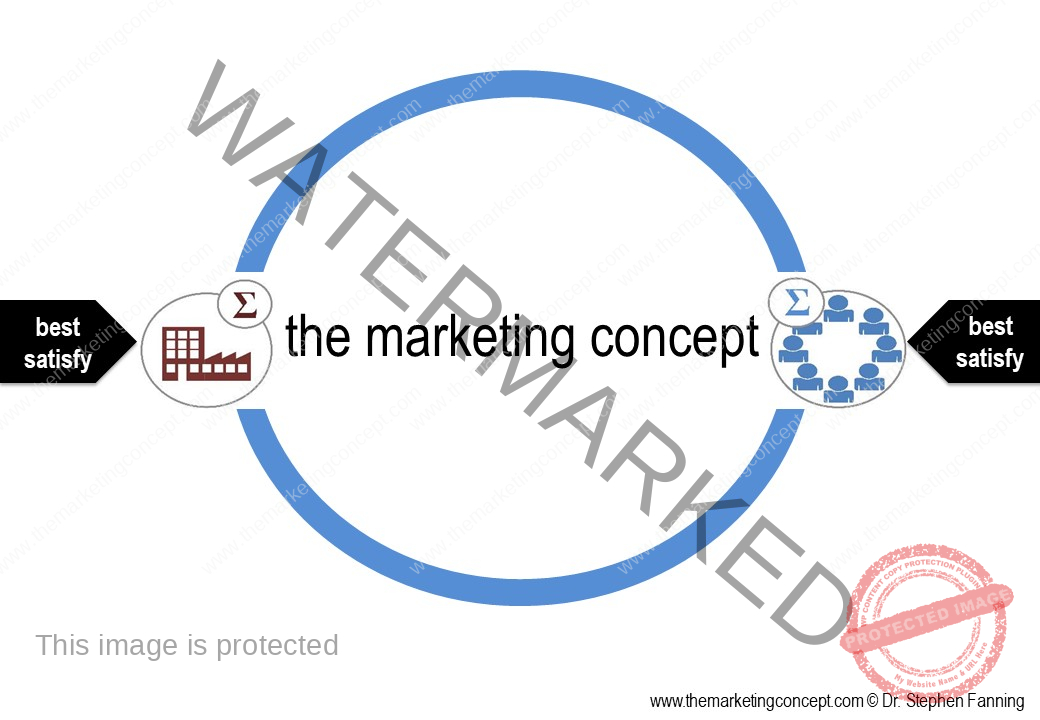
The circle of satisfaction
The circle of satisfaction explores the outcomes of the interactions between the customer and the organisation. These outcomes may be of a positive or a negative nature. The circle of satisfaction could be described as the bridge that links the buyer decision process and the total product.
The circle of satisfaction describes how consumers enter the buyer decision process with expectations of what the will get and give in an exchange and how they behave according to their evaluation. The circle of satisfaction also looks at the cumulative behaviour of a customer and the collective behavior of all customers. The collective satisfaction of all customers could lead to a competitive advantage [or disadvantage] in the marketplace.
The following is a brief overview of how the 3 modules complement each other:
- The buyer decision process is 80% focussed on the customer and 20% focussed on the organisation
- The total product concept is 80% focussed on the organisation and 20% focussed on the customer
- The circle of satisfaction is 50% focussed on the organisation and 50% focussed on the customer
Please read
the metaphor of theatre and branding to create a unique product value proposition in the mind of the consumer.
In this chapter of the circle of satisfaction we employ the metaphor of theatre to describe how business is like theatre with a front-stage a back-stage and how success is dependent on the support of customers. The metaphor is ideal to employ as a professional development seminar to highlight the importance of collaboration and customer satisfaction.

In this chapter of the circle of satisfaction we bring together a series of slides that bring ideas from our discussions on brand, unique product value propositions, internal communications, and external communications. Branding and brand equity is the goal of most organisations.
